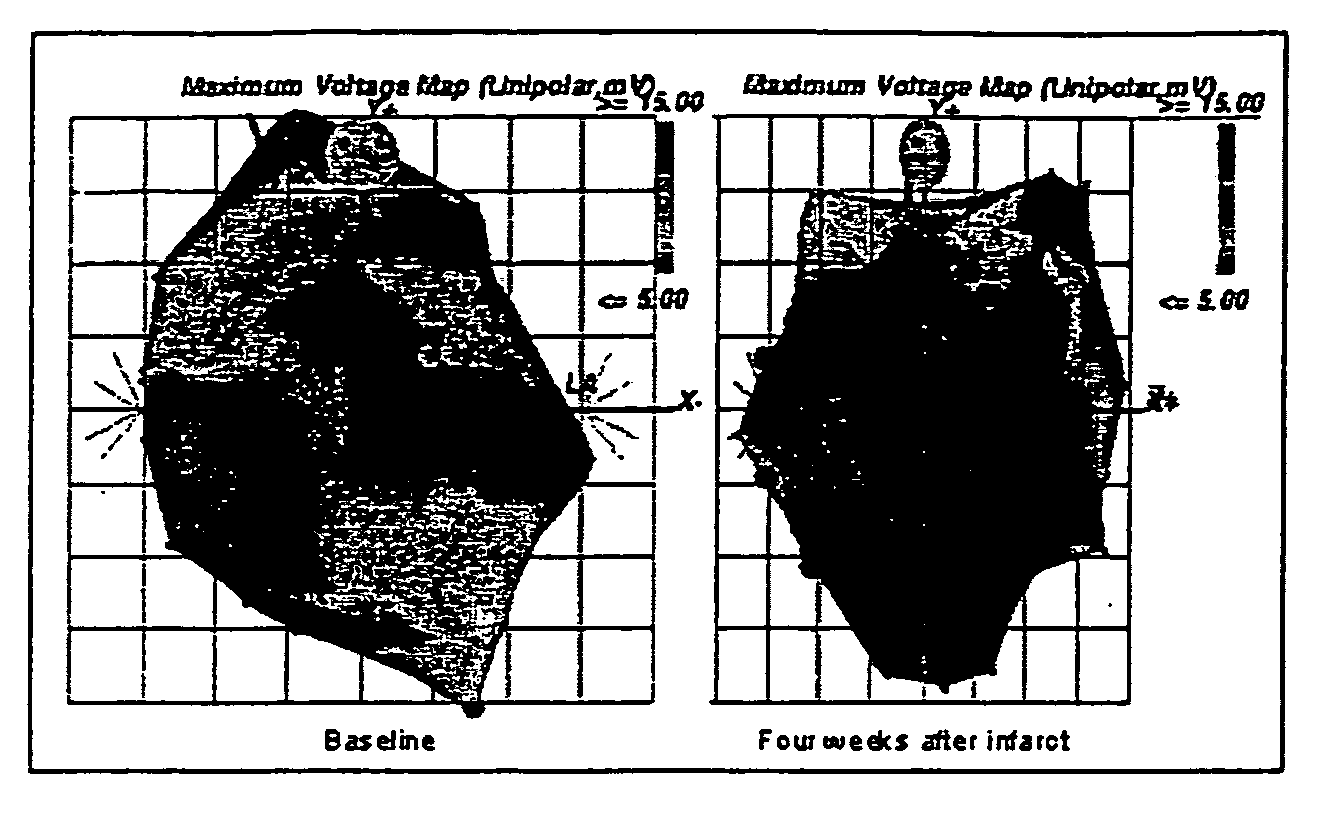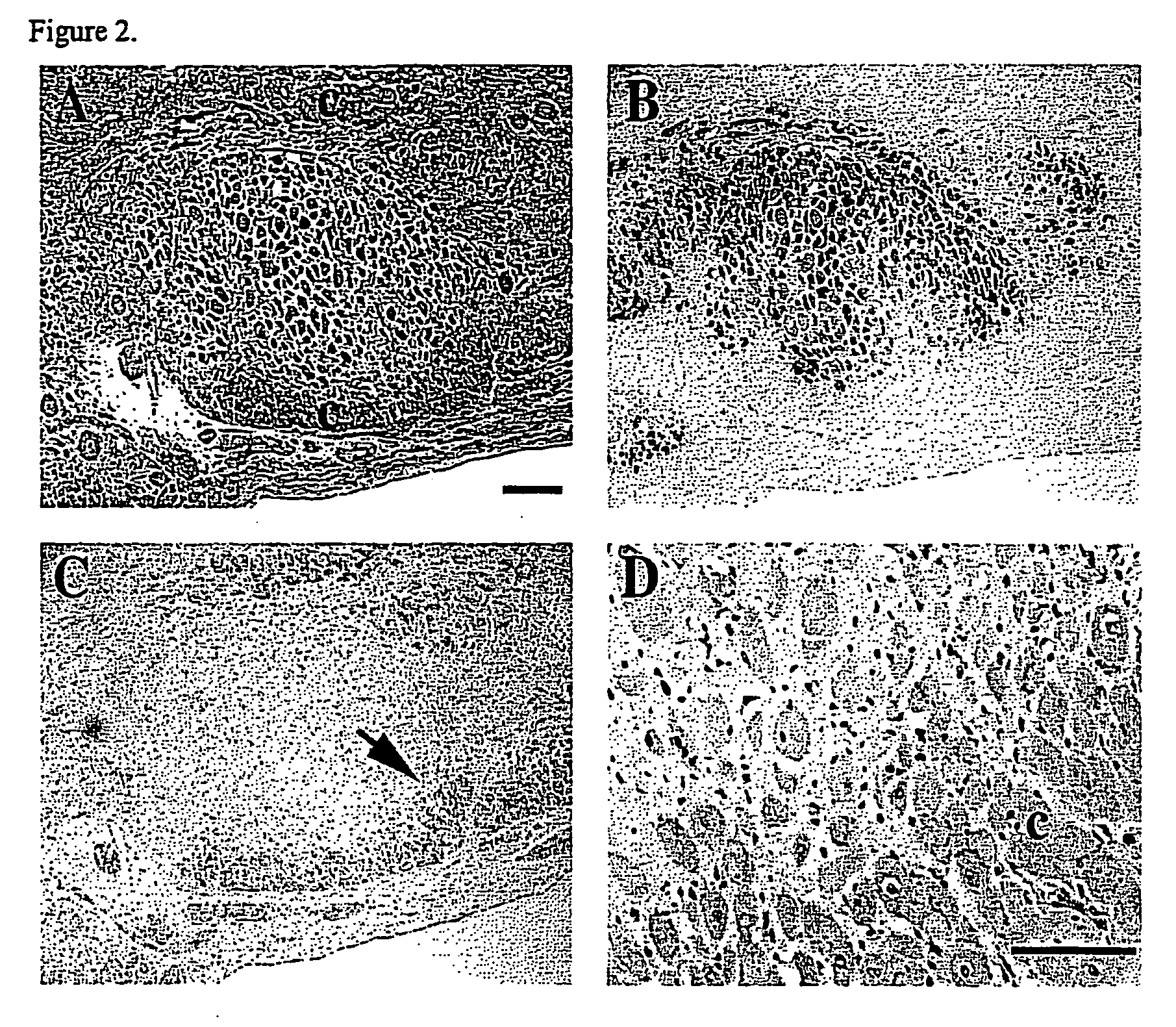Cellular cardiomyoplasty as supportive therapy in patients with heart disease
a heart disease and cellular cardiomyoplasty technology, applied in the direction of prosthesis, skeletal/connective tissue cells, drug compositions, etc., can solve the problems of poor survival rate of cellular grafts, limited treatment options, and the best treatment method, so as to achieve delayed or avoided cardiac transplantation or other further therapy
- Summary
- Abstract
- Description
- Claims
- Application Information
AI Technical Summary
Benefits of technology
Problems solved by technology
Method used
Image
Examples
example 1
Correlation of Autologous Skeletal Myoblast Survival with Changes in Left Ventricular Remodeling in Dilated Ischemic Heart Failure
Introduction
[0055] Autologous skeletal myoblast (ASM) transplantation, or cardiomyoplasty, has been shown in multiple experimental studies to improve cardiac function after myocardial infarction (MI) (Chiu et al. “Cellular cardiomyoplasty: myocardial regeneration with satellite cell implantation”Ann. Thor. Surg. 60:12-18, 1995; Li et al. “Cardiomyocyte transplantation improves heart function”Ann. Thor. Surg. 62:654-61, 1996; Murry et al. “Skeletal myoblast transplantation for repair of myocardial necrosis”J Clin. Invest. 98:2512-23, 1996; Scorsin et al. “Comparison of effects of fetal cadiomyocyte and skeletal myoblast transplantation on postinfarction left ventricular function”J. Thor. Cardiovasc. Surg. 119:1169-75, 2000; Tambara et al. “Transplanted skeletal myoblasts can fully replace the infarcted myocardium when they survive in the host in large n...
example 2
Safety and Feasibility of Percutaneous Autologous Skeletal Myoblast Transplantation in the Coil-Infarcted Swine Myocardium
[0092] All experiments were conducted according to guidelines published in the “Guide for the Care and Use of Laboratory Animals” (DHHS publication number NIH 85-23, revised 1985) and Subchapter A of the Federal Animal Welfare Act written by the United States Department of Agriculture and in the spirit of FDA Good Lab Practices. The study protocol was approved by the Harrington Animal Care and Use Committee at Arizona Heart Hospital, Phoenix, Ariz., prior to the start of the study.
Materials and Methods
[0093] Animal Preparation: Ten female Yorkshire swine between the ages of 3 and 6 months and weighing 91±25 lbs. underwent induced myocardial infarction. Three died during or shortly after induction of the myocardial infarction. One animal was used to evaluate short term retention and biodistribution of injected myoblasts, and six animals served as recipient ani...
PUM
 Login to View More
Login to View More Abstract
Description
Claims
Application Information
 Login to View More
Login to View More - R&D
- Intellectual Property
- Life Sciences
- Materials
- Tech Scout
- Unparalleled Data Quality
- Higher Quality Content
- 60% Fewer Hallucinations
Browse by: Latest US Patents, China's latest patents, Technical Efficacy Thesaurus, Application Domain, Technology Topic, Popular Technical Reports.
© 2025 PatSnap. All rights reserved.Legal|Privacy policy|Modern Slavery Act Transparency Statement|Sitemap|About US| Contact US: help@patsnap.com



